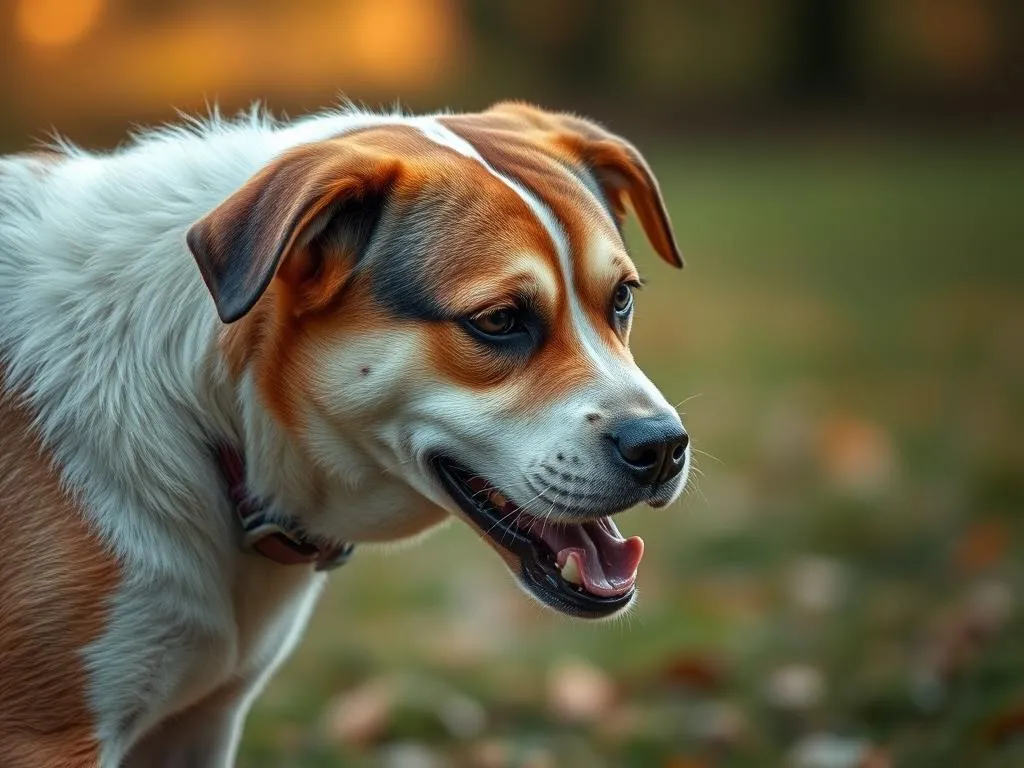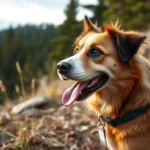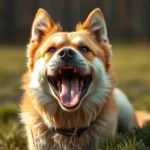
Introduction
Protective aggression in dogs is a behavior that can pose significant challenges for pet owners. It refers to a dog’s instinct to defend what they perceive as their territory or their human companions. If not addressed properly, this aggression can lead to dangerous situations. Understanding how to stop dog protective aggression is crucial for ensuring the safety of your dog, your family, and others in your community. This article will guide you through the complexities of protective aggression, offering insights into its causes, assessment methods, and effective management strategies.
Understanding Protective Aggression
Definition and Behavior
Protective aggression occurs when a dog feels the need to defend itself, its territory, or its family from perceived threats. This instinctual behavior can manifest in various ways, including barking, growling, snapping, or even biting. Common signs of protective aggression include:
- Body language: Stiff posture, raised hackles, and direct staring.
- Vocalizations: Growling, barking, and other aggressive sounds.
- Physical actions: Approaching or positioning itself between the perceived threat and its human or territory.
Certain situations may trigger protective aggression in dogs, such as the presence of strangers, loud noises, or sudden movements. Understanding these triggers is essential for managing and mitigating this behavior.
Causes of Protective Aggression
Several factors contribute to protective aggression in dogs, including:
- Genetic predisposition: Certain breeds are more prone to protective behaviors due to their history and purpose (e.g., guarding breeds like Rottweilers and German Shepherds).
- Environmental factors: A lack of socialization during critical development phases, exposure to trauma, or negative experiences can lead to fear-based protective aggression.
- Owner behavior: Inconsistent training, reinforcement of aggressive behavior, or inadvertently encouraging a dog to act protectively can exacerbate the issue.
Assessing Your Dog’s Protective Aggression
Observational Techniques
To effectively address protective aggression, it’s vital to understand your dog’s specific triggers. Observational techniques include:
- Identifying triggers: Pay attention to situations or stimuli that provoke aggressive behavior, such as specific people, sounds, or environments.
- Keeping a behavior journal: Document incidents of protective aggression, noting the context, triggers, and your dog’s reactions. This can provide valuable insights into patterns of behavior.
- Consulting with a professional trainer or behaviorist: A qualified expert can help identify triggers and provide tailored strategies for your dog’s unique situation.
Evaluating Severity
Differentiating between mild, moderate, and severe protective aggression is essential for determining the best course of action. Mild protective aggression may involve barking or growling without actual contact, while severe aggression can result in biting or serious injury.
Situations that require immediate professional help include:
- Aggression directed towards family members or friends.
- Incidents where a bite has occurred or was nearly executed.
- Signs of fear-based aggression, where the dog appears anxious or panicked.
Understanding the risks associated with protective aggression can motivate owners to take action and seek solutions.
Strategies for Managing Protective Aggression
Creating a Safe Environment
Establishing a secure space for your dog can significantly reduce anxiety and the likelihood of aggressive behavior. Consider the following strategies:
- Safe zones: Create a comfortable area in your home where your dog can retreat when feeling stressed or threatened.
- Barriers: Use baby gates or crates to limit your dog’s exposure to potential triggers, especially during the initial stages of training.
Training Techniques
Positive Reinforcement
Positive reinforcement is a powerful tool in modifying aggressive behavior. This technique involves rewarding desired behaviors to encourage their recurrence. Here’s a step-by-step guide to applying positive reinforcement effectively:
- Identify the desired behavior: Determine what behavior you want to reinforce (e.g., remaining calm when a stranger approaches).
- Choose appropriate rewards: Use treats, praise, or toys that your dog finds motivating.
- Timing is crucial: Immediately reward your dog when they exhibit the desired behavior to help them make the connection.
- Consistency: Maintain a consistent approach to reinforce positive behaviors over time.
Desensitization and Counter-Conditioning
Desensitization and counter-conditioning are effective techniques for gradually exposing your dog to their triggers in a controlled manner.
-
Desensitization: This involves slowly introducing your dog to the trigger at a distance or intensity that does not provoke a reaction. Gradually decrease the distance or increase the intensity as your dog becomes more comfortable.
-
Counter-conditioning: Pair the presence of a trigger with something positive, such as treats or playtime. For example, if your dog reacts aggressively to strangers, have a friend approach while you provide treats to your dog. Over time, your dog will associate the presence of strangers with positive experiences.
Patience and consistency are key when implementing these techniques, as progress can take time.
Socialization
Socialization is crucial for reducing protective aggression. Techniques for socializing a protective dog include:
- Gradual introductions: Introduce your dog to new people and situations slowly and positively. Start with calm environments and gradually expose them to more stimulating settings.
- Controlled playdates: Arrange meetings with well-mannered dogs in a neutral space. This can help your dog learn appropriate social behaviors and build confidence.
Regular socialization can help your dog feel more comfortable in various situations, reducing the likelihood of protective aggression.
Professional Help
When to Seek a Professional
Recognizing when to seek professional help is vital in addressing protective aggression. Signs that indicate a need for intervention include:
- Frequent incidents of aggressive behavior.
- Inability to manage your dog’s aggression despite implementing training techniques.
- Aggression that escalates or becomes more severe over time.
Various professionals can assist in managing protective aggression, including certified dog trainers and animal behaviorists.
Finding the Right Trainer or Behaviorist
Choosing a qualified professional is crucial for effective intervention. Here are tips for selecting the right trainer or behaviorist:
- Research credentials: Look for professionals with certifications from reputable organizations such as the Association of Professional Dog Trainers (APDT) or the International Association of Animal Behavior Consultants (IAABC).
- Ask questions: During initial consultations, inquire about their experience with protective aggression, training techniques, and philosophy.
- Check reviews: Look for testimonials or reviews from previous clients to gauge the effectiveness of their methods.
Finding the right professional can provide the guidance and support you need to effectively address your dog’s protective aggression.
Ongoing Management and Maintenance
Continued Training and Reinforcement
Regular training sessions are essential for maintaining progress and preventing regression. Consistency in reinforcing positive behaviors will help solidify your dog’s training and reduce the likelihood of protective aggression resurfacing.
- Short, frequent sessions: Keep training sessions brief but frequent to maintain your dog’s engagement and focus.
- Variety in training: Introduce new commands and challenges to keep your dog mentally stimulated and reinforce their learning.
Monitoring Behavior
Keeping track of changes in your dog’s behavior over time is crucial for assessing the effectiveness of your training strategies.
- Behavior journals: Continue documenting incidents of protective aggression, noting any improvements or setbacks.
- Adapting strategies: Be prepared to modify your training techniques based on your dog’s progress and any new triggers that may arise.
Regular monitoring can help you stay ahead of potential issues and ensure a safer environment for your dog and those around them.
Conclusion
Addressing protective aggression in dogs is a multifaceted process that requires understanding, patience, and consistent effort. By recognizing the signs and causes of this behavior, assessing its severity, and implementing effective management strategies, you can significantly improve your dog’s behavior and overall well-being. Remember, the journey to a well-adjusted and safe companion takes time, but with dedication, you can create a harmonious living environment for both you and your dog.









